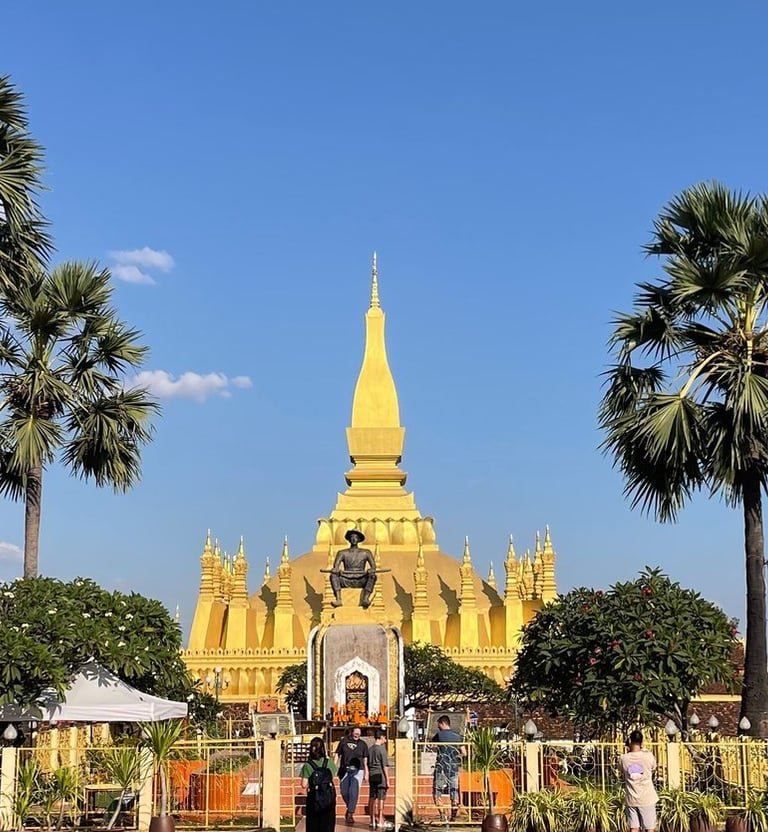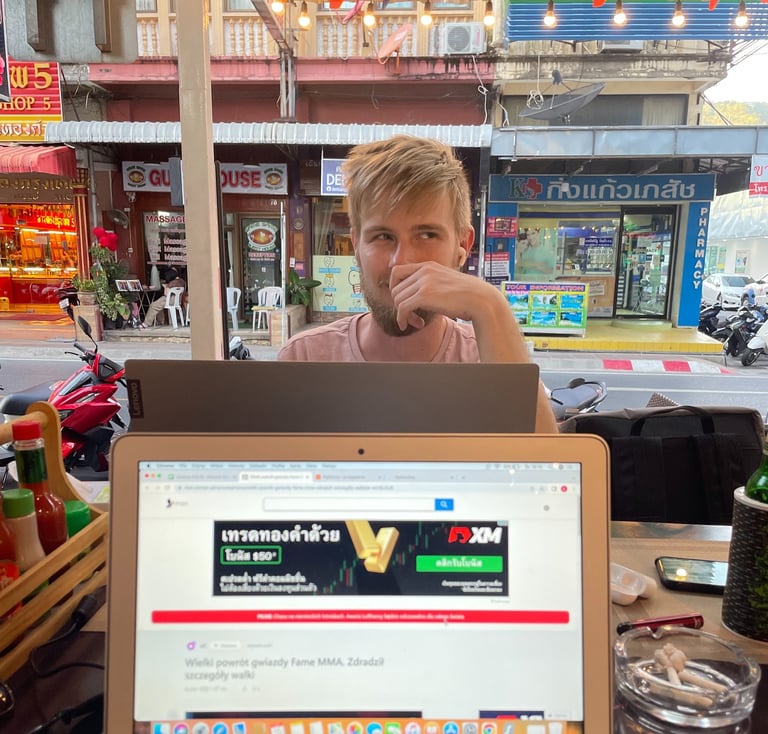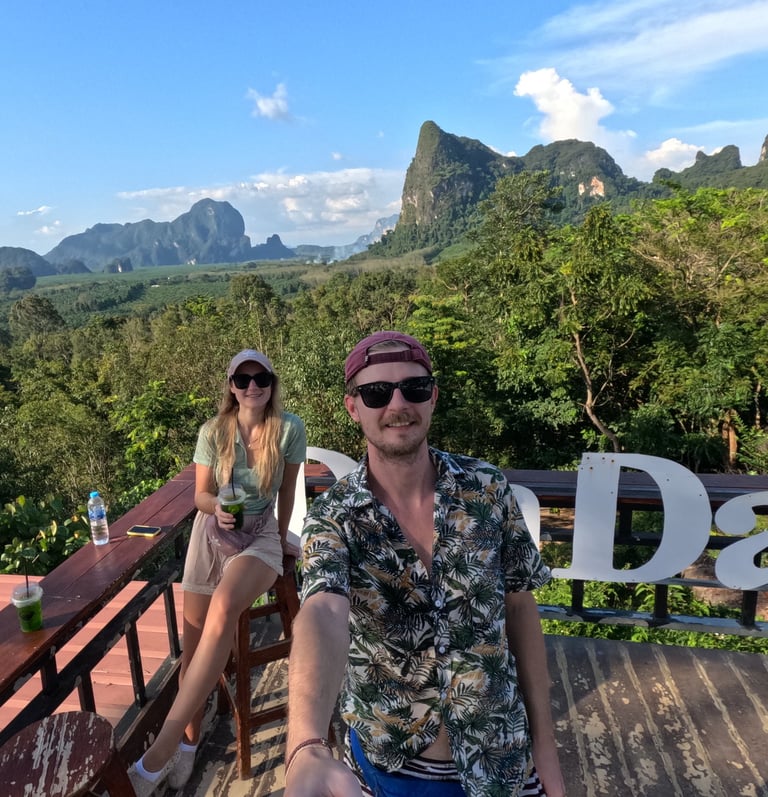
Before diving into the story of the capital, take a look at our general guide to Laos - you’ll find essential information about visas, currency, weather (when to go), and practical travel tips.
V I E N T I A N
Table of Contents
First Impressions of Vientiane
What to see in Vientiane?
That Dam Stupa - The Black Stupa
Patuxay - The Victory Arch
Pha That Luang - The Great Golden Stupa
What to see in Vientiane?
A definite must-see is Hat Don Chan – the Mekong Riverside Promenade. It was the first place we went right after landing, just in time for sunset and dinner. The area features a long riverside walkway, a park, a night market, several great restaurants by the river, and the statue of King Anouvong, who points his hand toward Thailand. Whether he’s signaling an attack or offering a gesture of reconciliation - opinions vary.

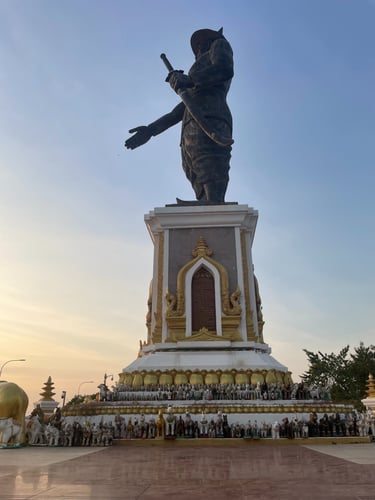

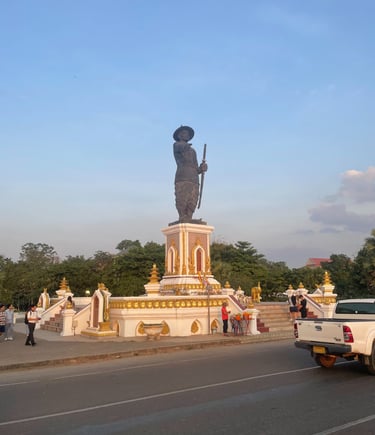
Within walking distance from the statue, you’ll find the Presidential Palace, Wat Sisaket Temple, and the That Dam Stupa (also known as the Black Stupa). Right by the river, there’s also a night market with a surprisingly wide selection of clothes, accessories, and souvenirs. I even found a pair of super original Gucci sunglasses there - not because of the brand, but because they were simply the nicest ones 😁
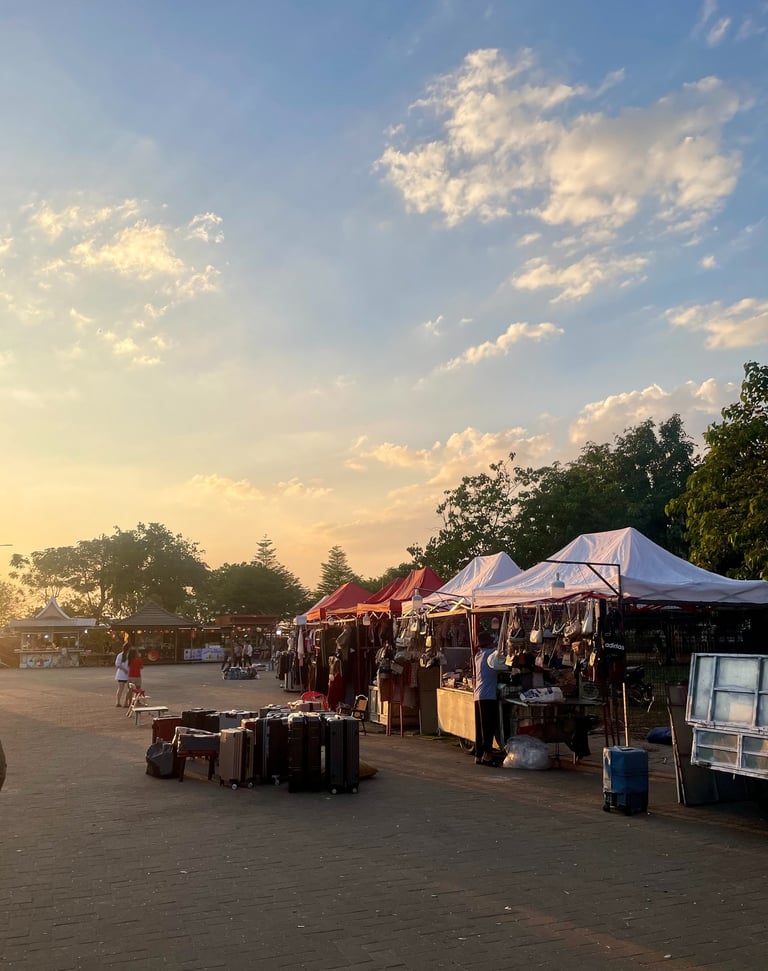


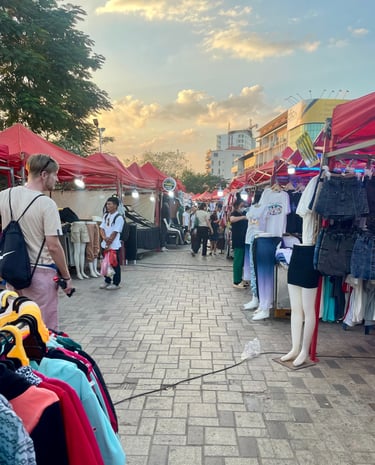
Walking along the river, you’ll see locals walking their dogs, jogging, selling vegetables, or fishing. The atmosphere is incredibly calm and welcoming - nobody bothers you, and you can just enjoy the slow rhythm of local life. We absolutely loved the laid-back vibe and the authentic market energy.
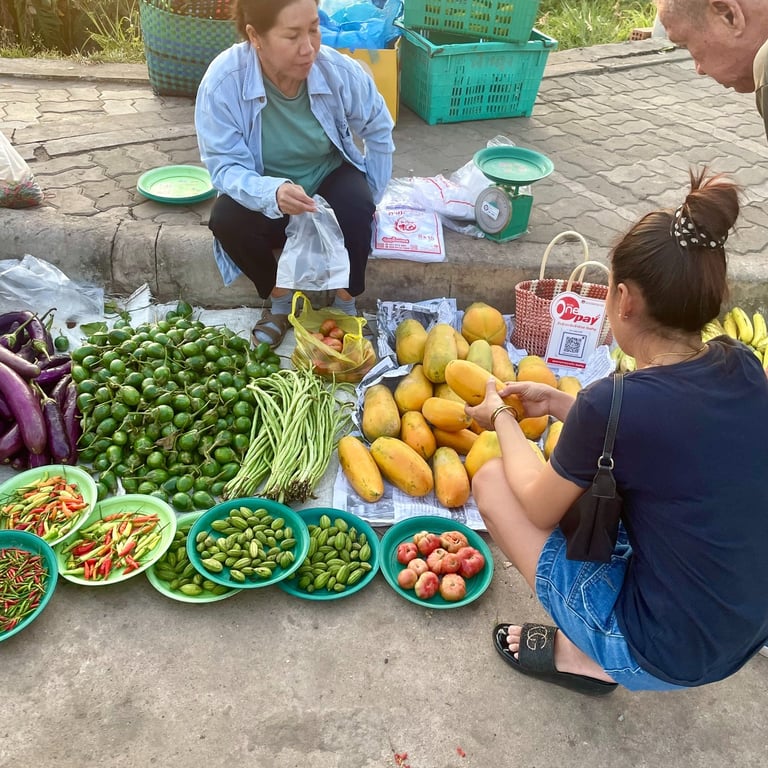
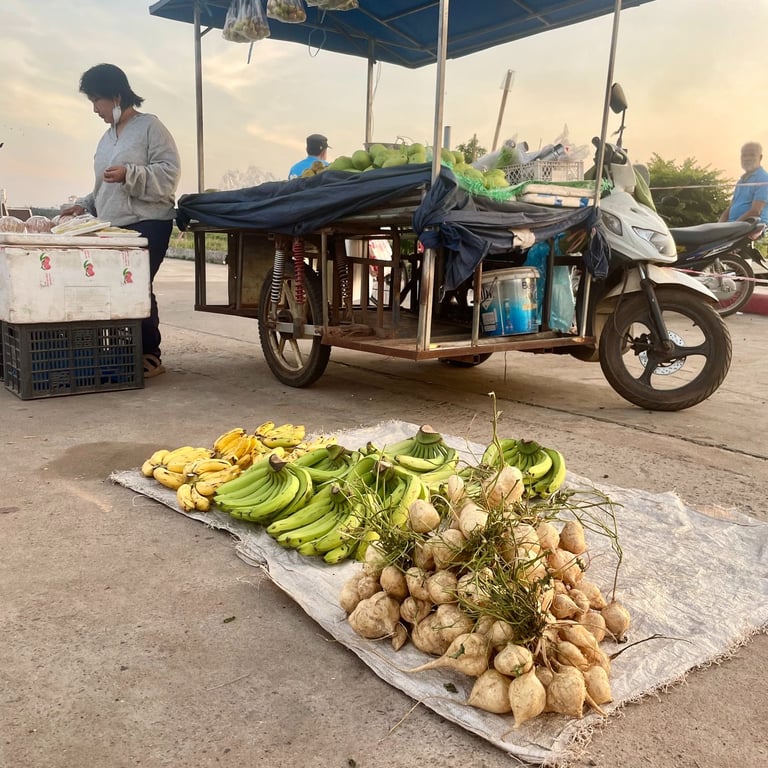
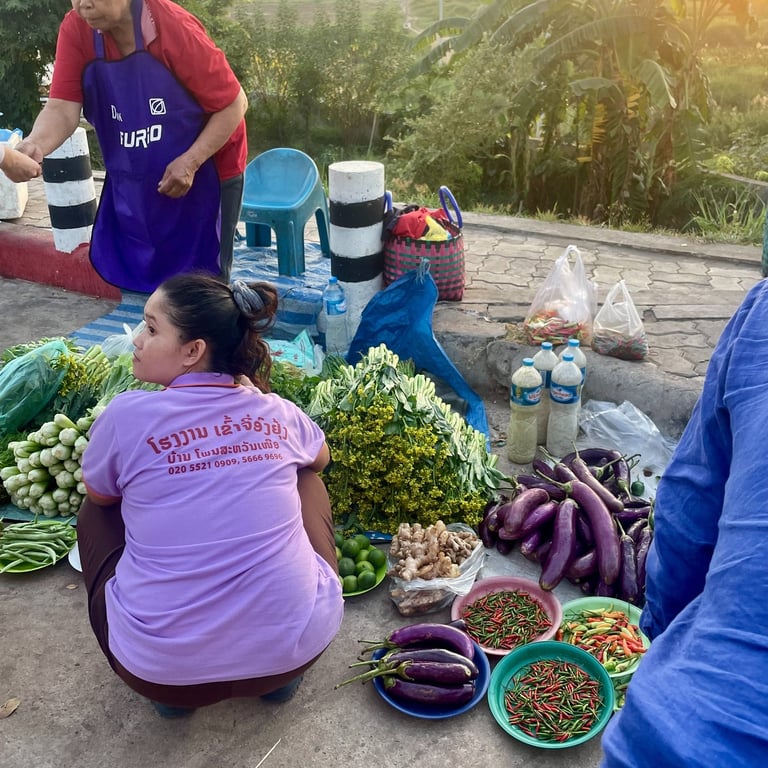
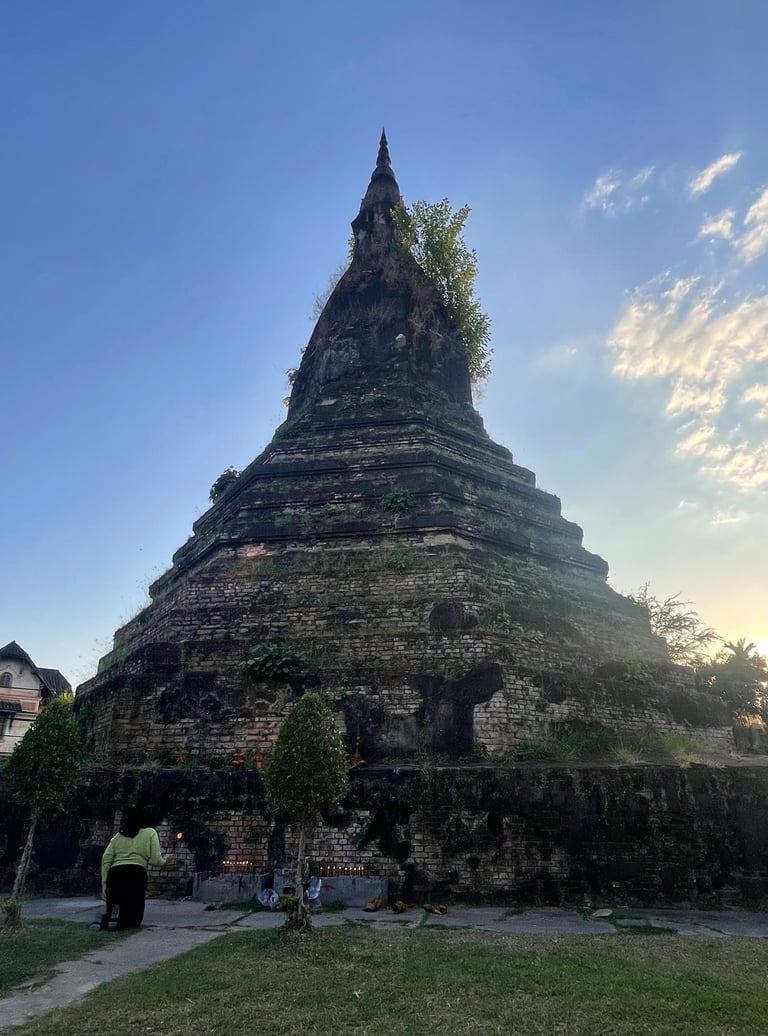

That Dam Stupa - The Black Stupa
This site is often overlooked by visitors to the capital or simply visited in passing on the way to the Royal Palace or one of the newer temples. While it may not be a spectacular attraction, it’s certainly an interesting and atmospheric spot.
The exact date of construction remains unknown. According to local legend, a seven-headed naga (mythical serpent) sleeps inside the stupa. During the Laotian–Siamese War of 1828, the naga is said to have awakened and protected the city’s residents. Unfortunately, while the people may have been spared, the stupa was not - it was once entirely covered in gold, which was later stripped away by invaders.
Today, the structure has never been restored to its former glory. The bricks have darkened with moisture and are now covered in vegetation, giving it a mysterious charm.
Around the stupa, you’ll find offerings of flowers and food, as well as burning incense sticks. Locals often come here to pray, meditate, and relax on the surrounding benches. Despite its weathered appearance, That Dam remains a significant site of worship for many residents.
Although it stands in a rather unusual location - right in the middle of a roundabout, the place has a remarkably peaceful and spiritual vibe. The nearby streets are calm, and you’ll find several cafés and wine bars around. It’s worth stopping by for a few moments to sit, observe, and soak in the local atmosphere.
Patuxay - The Victory Arch
The tallest structure in the city, Patuxay is Vientiane’s own version of the Arc de Triomphe, built to commemorate Laos’ independence. From the seventh floor, you can enjoy beautiful panoramic views of the city and its surroundings.
An interesting feature is a plaque on the monument that humorously describes it as a “concrete monster.” Whether this came from a guidebook or was written with a touch of local humor, no one knows - but it shows the Laotians’ lighthearted attitude. While Patuxay may not be the most elegant monument in the world, it’s impressive in its own way, especially considering the context and history of Southeast Asia. For many visitors, it remains a proud symbol of modern Laos and a must-see landmark in Vientiane.


Pha That Luang - The Great Golden Stupa
This stunning monument is considered the most important national symbol of Laos, representing both Buddhism and the country's sovereignty.
Originally built in the 1st century as a Hindu temple, it was later transformed into a Khmer temple in the 13th century. Over the centuries, the stupa underwent several major reconstructions due to invasions and looting, which continued from the early 19th century until 1940. It was only after World War II that Pha That Luang was fully restored - under the design of a French architect - and became a proud symbol of Laotian identity.
The main stupa has a pyramid-like structure, measuring about 69 meters in length and 45 meters in height, adorned with 500 kilograms of gold leaf (only the top is covered with real gold). Pha That Luang was built on three levels, symbolizing the spiritual ascent from Earth to Heaven. The first level represents the underground world. The second level, surrounded by 30 smaller stupas, symbolizes the 30 perfections of Buddhism. The top level represents the path to the heavenly realm.
The area surrounding the Great Stupa is vast and beautifully maintained, filled with gardens, temples, and statues. You’ll also find a palace where monks live and study, adding to the peaceful and sacred atmosphere of this revered site.
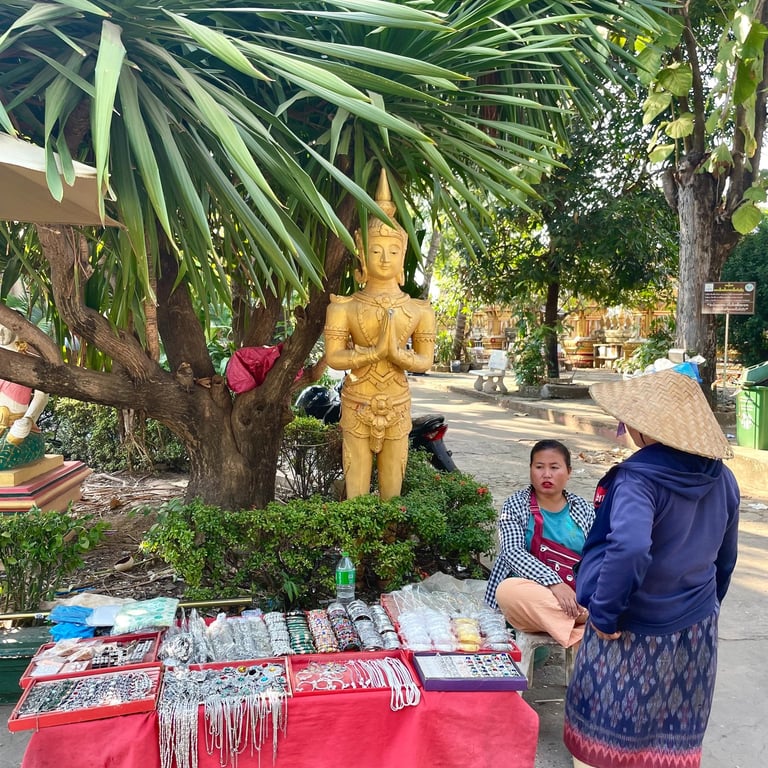
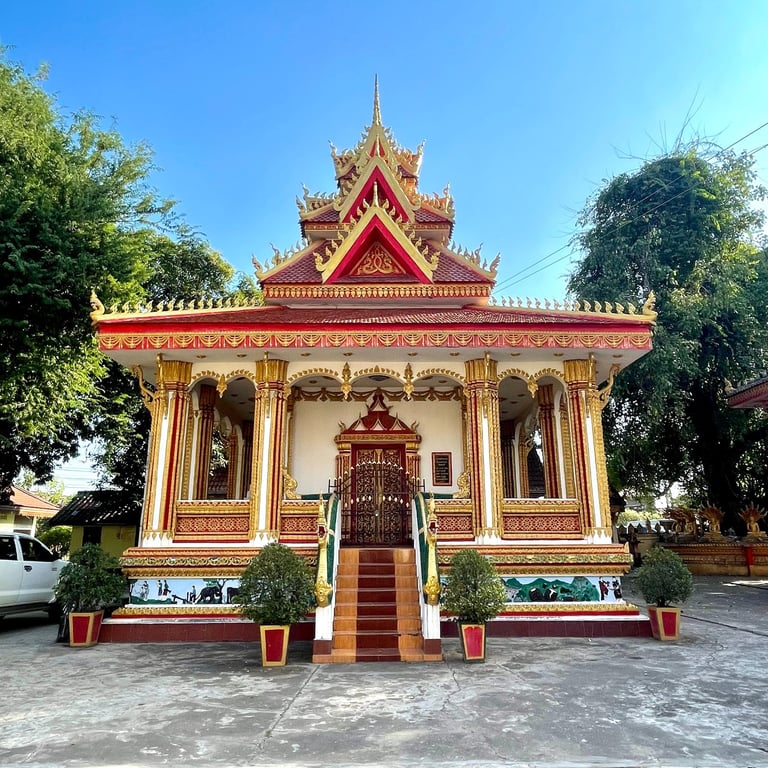
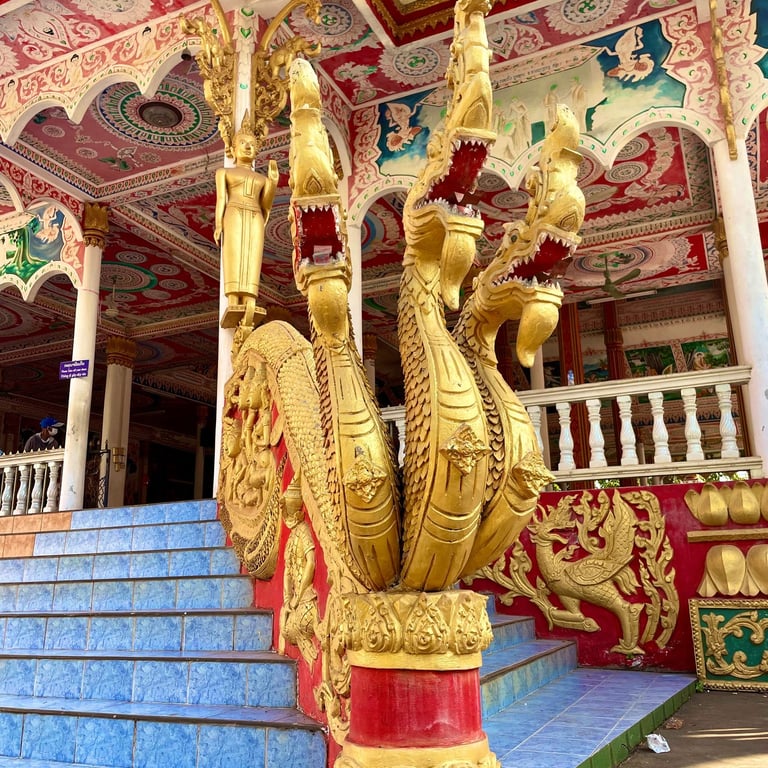


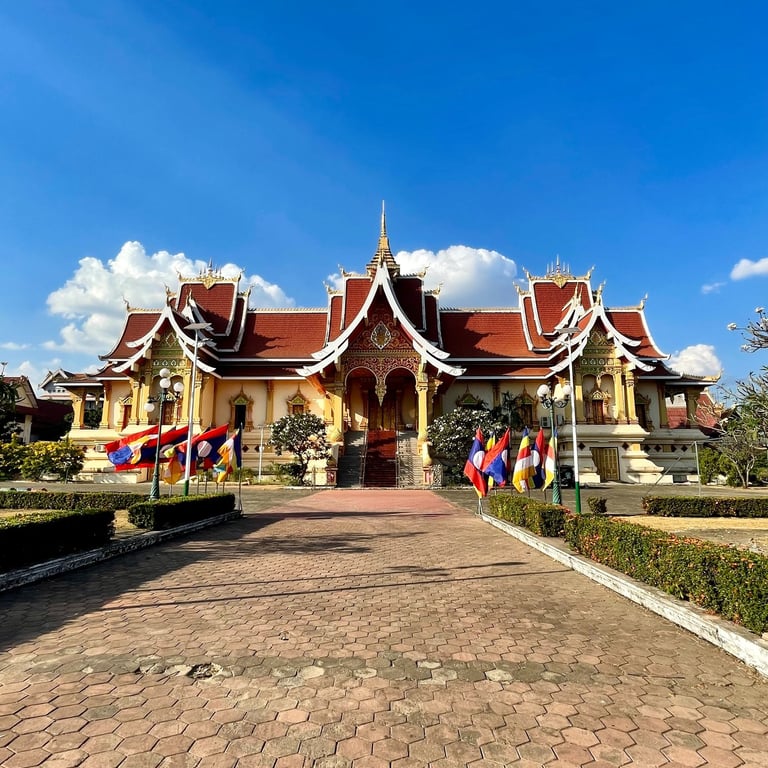
If you’re looking for organized tours in Laos, feel free to check out our GetYourGuide link.
By booking through it, you’ll be supporting our future travels - at no extra cost to you.

Need help planning your vacation?
Heading to Laos? Need someone to plan your holiday, or just a few tips and a chat? We’re here for you.
Drop as a line
Do you have questions about traveling to Asia? Suggestions for the blog? Want to collaborate? Need help or just want to meet for coffee?
Feel free to get in touch.



